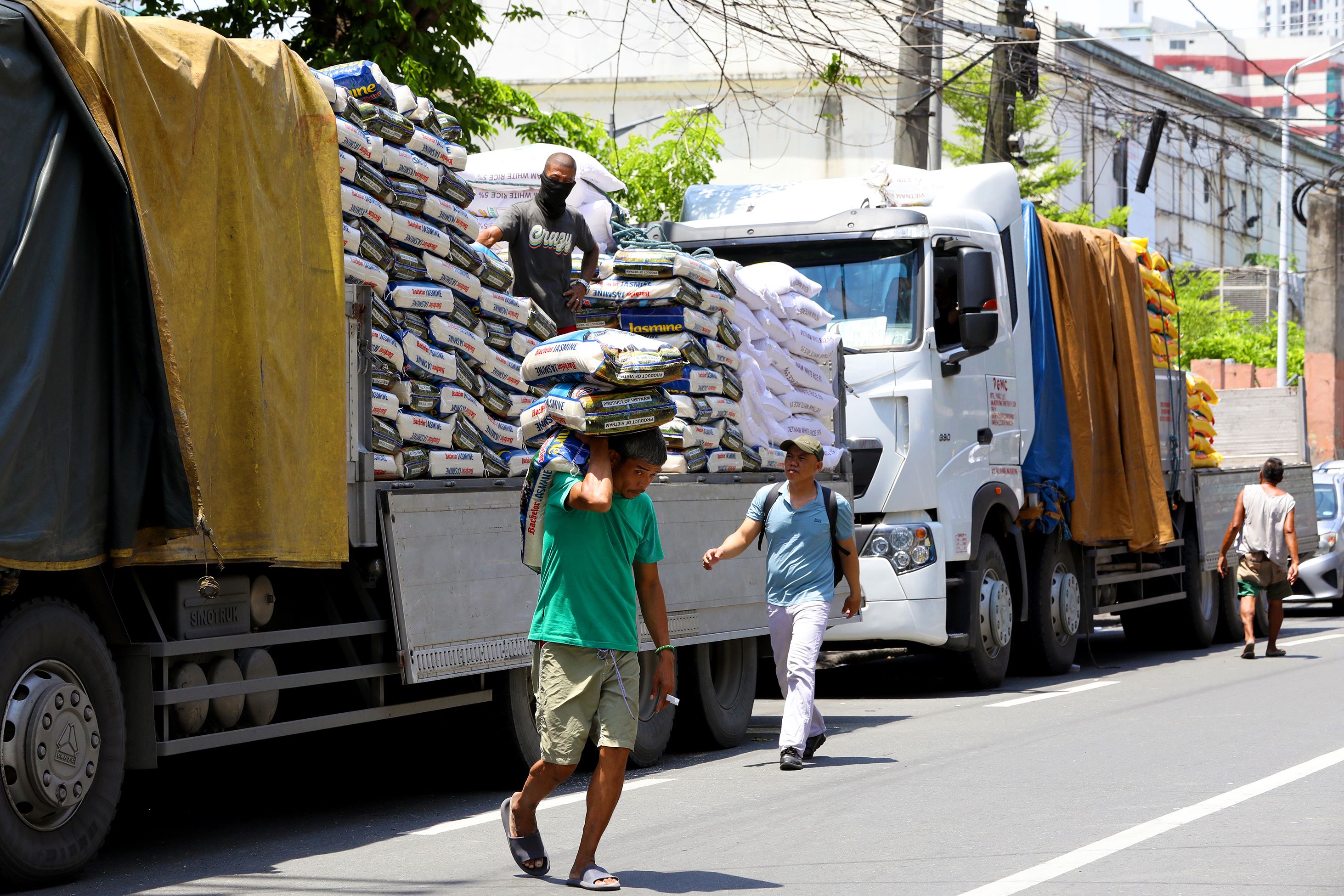In an ideal world, reducing tariffs on imported rice– especially when faced with a short supply because of natural disasters— would ensure a buffer stock that could help ensure ample supply for the market.
Again, in an ideal world (meaning there are no hoarders and greedy price manipulators), reduced tariffs on imports would help ease domestic rice prices.
But then again, our reality is that despite efforts of government and palay farmers to improve local production to meet market demands, natural calamities have dampened efforts at self-sufficiency.
So we lifted tariffs on rice and other food items, but the result was higher prices for these items because in the case of pork there is continued spread of African Swine Fever (ASF), in the case of chicken, eggs, rice, vegetables and other planted crops there is climate change that wipe out standing crops and animals/birds.
Impacts
All told, other intervening factors prevent us from achieving our food security goals– no matter how hard we try and how much resources we pour into agriculture.
Because of such adversities, our traders, retailers and middlemen (from farmgate to wet markets) a lot of those involved in the supply chain each have a layer or more in profits to collect for their investments.
In the end, retail prices go up, up and away leaving consumers grappling for food supply at prices they can hardly reach.
The government's intention to reduce prices by importing cheaper commodities and further reducing them by lowering tariffs is all for naught because those in the supply chain are simply insatiable for profits, even if the consumers (regardless if they are friends or relatives of theirs) would suffer from high-priced items.
Considering all the above, the actual situation had made the exercise (reducing tariffs to lower retail prices) a myth.
Rethink tariff reductions
Thus, the suggestion of Jayson Cainglet, executive director of the Samahan ng Agrikultura, for the NEDA (National Economic and Development Authority) – author of EO 62 reducing tariffs until end of 2025 to 15 percent from 35 percent– to rethink this policy since its implementation did not result in lower prices of rice.
“Those who pushed for tariff reduction and promised lower rice prices (at least P 7/kg) as early as July, are now eerily quiet. Even 800,000 MT that have entered the country at reduced tariff, yet prices remain high,” he was quoted by Bilyonaryo.com.
SINAG urged President Marcos Jr. to revoke Executive Order 62 which reduced rice import duties from 35 percent to 15 percent as it made no dent in reducing rice prices.
“Habang hindi bumababa ang presyo ng bigas, farmers are reporting decreasing farmgate price of palay (bet Php 4-5/kilo) sa panahong hindi pa anihan,” Cainglet added.
“A review of EO 62 is forthcoming next month, NEDA should now accept the reality of a failed rosy prediction of cheaper rice prices.”
Misplaced optimism
As if to save face, NEDA Secretary Arsenio Balisacan reiterated his optimism that rice prices are likely to decline further with the entry of more imports under reduced tariff.
“There’s a great amount of imports coming in from the effects of the tariff reduction plus of course the development of the global market,” Balisacan told reporters on the sidelines of an event late on Tuesday.
Agriculture officials have previously said the lower tariffs are expected to bring down rice prices by P6-P7 per kilo.
“We should expect a greater translation of the tariff reduction into lower prices. But don’t expect too much because the world prices are still high,” Business World reported, quoting Balisacan.
The Food and Agriculture Organization’s (FAO) All Rice Price Index, which follows rice prices in key exporting countries, rose to 137.3 as of end-August from 127.9 in the same period a year ago.
A higher price index means a rise in commodity prices over the period, while a lower index means otherwise.
Rice hoarding?
RCBC Chief Economist Michael Ricafort said the full effect of lower tariffs on rice imports will likely be felt as early as the fourth quarter “as a function of competition from local and import rice amid lower world prices of rice, to which economics Prof. Leonardo Lanzona, of Ateneo de Manila University agreed by October.
Lanzona noted that rice prices may not drop “significantly” despite the lower tariffs.
Port congestion is now being blamed for the continuing high prices with DA officials calling on Bureau of Customs to expedite release of imported rice.
However, the BoC said the importers have not been getting the stocks– perhaps waiting for the price to go higher before getting them from the ports.
Apparently, they have bought so much local palay and kept them at warehouses before deciding to mill and release them in the market before getting the higher-priced imported grains.
This way, they can manipulate local retail prices.
Even the Philippine Ports Authority (PPA) noted that consignees are taking longer to withdraw rice container shipments, leading to “possible artificial increases in rice prices.”
Despite this, the PPA recorded a 70 percent yard utilization, indicating that the country’s ports are not congested.
Palay prices
The latest DA data showed that imported regular milled rice costs P46.73 per kilogram this week, a P3.73 increase from P43 in the same period last year. But the price of well milled rice is at P51.45 per kg., P6.45 higher than the P45 recorded
The Federation of Free Farmers (FFF) said it received reports from Nueva Ecija, Pangasinan, Mindoro Occidental, Sultan Kudarat and North Cotabato that farmgate prices have fallen to a range of P21 to P23 per kilo.
In some parts of Nueva Ecija, the country’s rice granary, traders are buying palay at P16.50/kg.
“Traders are afraid that the fresh harvests will coincide with the arrival of cheap imports, resulting in oversupply. So, they play safe by buying low from farmers,” said FFF National Manager Raul Montemayor, adding that NFA might not be able to buy because its resources are already depleted.
#WeTakeAStand #OpinYon #OpinYonNews #DA #NEDA #NFA #PPA
